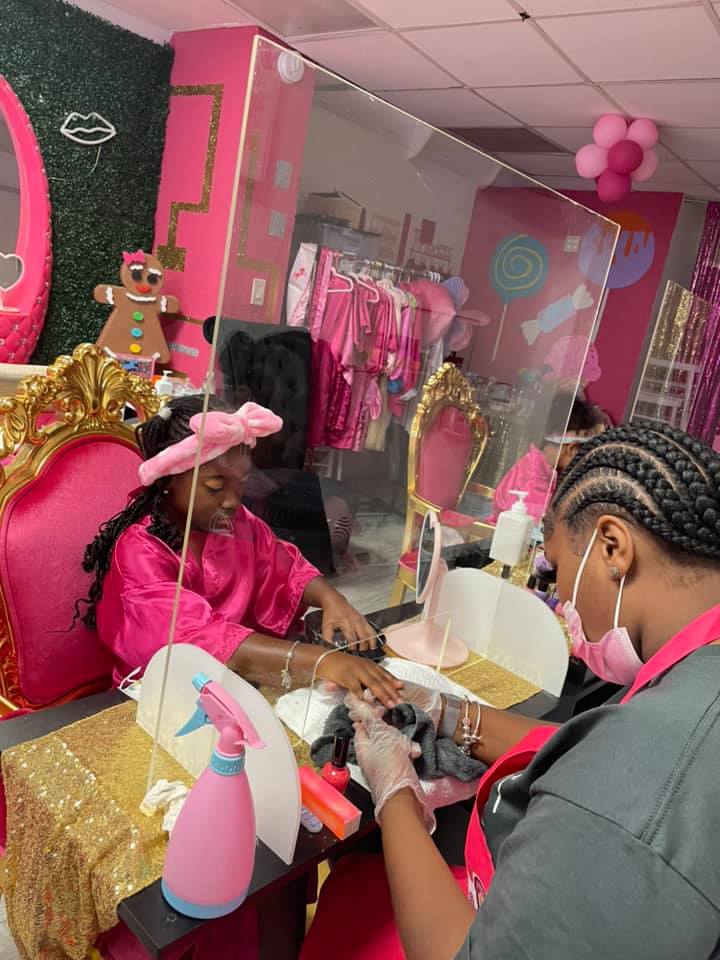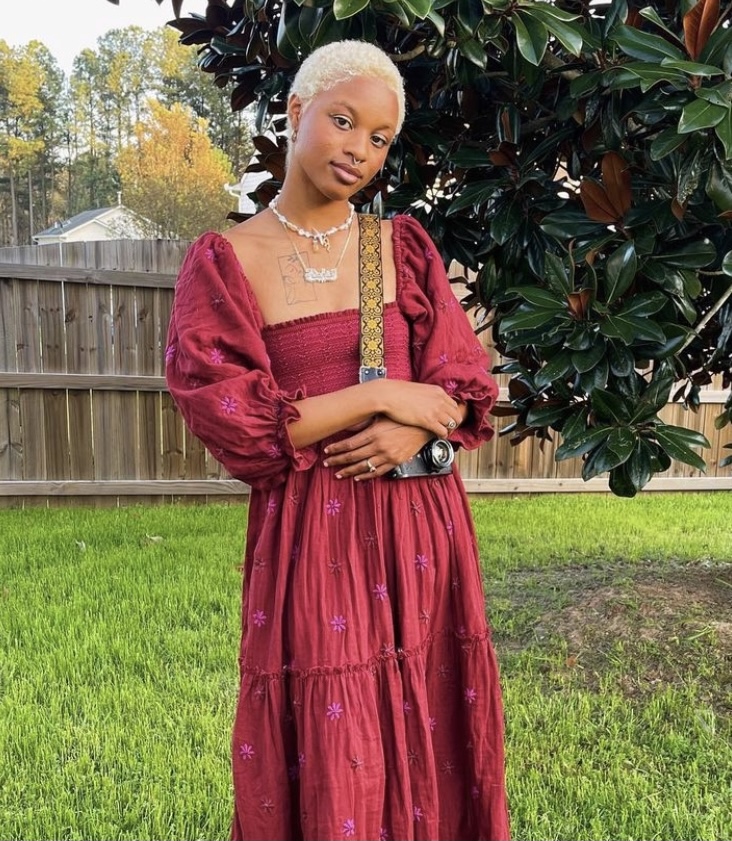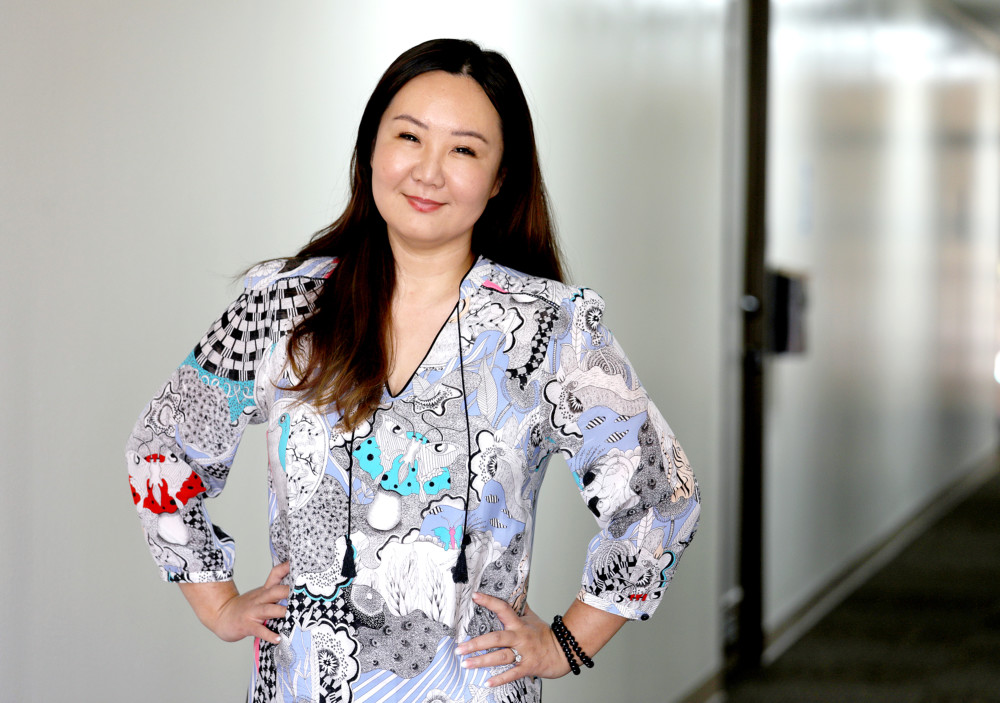By Benjamin Romano
The Seattle Times
WWR Article Summary (tl;dr) Journalist and tech entrepreneur Sherrell Dorsey is developing a database to track whether corporations are backing up their pledges for diversity with meaningful actions.
Seattle
As protests spread across the nation in the aftermath of the police killing of George Floyd in May, scores of corporations voiced support and, in some cases, promised changes to hiring practices or donations to organizations working to improve equity and fight injustice.
These pledges were a marked change from the relative quiet of corporate America in the aftermath of earlier high-profile police killings of Black people. The tech industry in particular, which has struggled to diversify its ranks, was among the most vocal.
Sherrell Dorsey, a journalist and technology entrepreneur who found a door into the industry through a 24-year-old Seattle program with roots in the Central District, wanted to know whether corporations were backing up their rhetoric with meaningful actions.
As founder and editor of The Plug, a 4-year-old media company covering technology and innovations from a Black perspective, Dorsey gathered more than 200 corporate statements in a database and matched them with workforce demographic data, as well as any concrete pledges announced in the days and weeks that followed.
“There definitely was some sincerity,” Dorsey says of the corporate responses. “And then I also think that of course, there’s probably folks who don’t actually care. They just want to be represented” in the database.
As the tech industry has become the dominant force in the economy nationally and in Seattle, creating waves of wealth that helped price Black people out of neighborhoods including the Central District, past efforts to diversify have done little.
An analysis of employment in 21 computer and mathematical occupations — high-skill, high-pay jobs such as programming and database administration that serve as a proxy for tech employment broadly — found that Black people made up 11.9% of all workers nationally in 2016, but only 7.9% of computer and math occupations. That’s down from 8.1% in 2002, according to a Brookings Institution analysis of U.S. census and employment data. In the Seattle-Tacoma-Bellevue metropolitan area, Black people were 5% of the 2016 workforce, but just 2.1% of computer and math occupations.
Dorsey’s database, which she is developing as a tool for job seekers and consumers who want a better picture of corporations’ words and actions on race, is one way the industry is being held accountable for making good on its promises.
Many corporate leaders appear to be seeing, for the first time amid this year’s civil rights movement and pandemic, “that these aren’t isolated incidents,” Dorsey says. “This is the fundamental way in which Black and brown people and other underrepresented groups are treated very poorly in this country. And the practices within the workplace are just as egregious, if not even more, because you’re wielding this power of people’s economic mobility.”
Growing up in Seattle, Dorsey inherited an early interest in technology from her grandfather, Jerry Dorsey III, who moved here from Detroit in the 1970s to work at Boeing and later was a camera operator at KING 5. A builder and technologist, he made sure Dorsey and her cousins had computers in their homes. She remembers playing around with MS Paint and solitaire and making business cards for early entrepreneurial ventures selling jewelry to family friends.
Her mom, Kikora Dorsey, steered her toward the Technology Access Foundation (TAF), a program begun in 1996. It connected her with internships at Microsoft each summer of her high school years at Franklin. Those added to the coding, server administration and business skills she was building through TAF’s after-school classes, hosted at the time in a Central District storefront.
Dorsey says that through TAF, she gained exposure to the tech industry in ways many of her peers did not.
In 2005, she left for college at the Fashion Institute of Technology in New York City with a scholarship from Blacks at Microsoft, a company-sponsored employee resource group founded in 1989, and a growing network of mentors and supporters, including Black people and women.
“That really helped me define how I saw myself in the industry,” Dorsey says.
But she rarely saw herself or coverage of underrepresented groups in news coverage of tech, which, like the industry itself and journalism more broadly, has been dominated by white men.
TAF co-founder and Executive Director Trish Millines Dziko said that when there was coverage, it often took the tone of, “Oh look at this unicorn. Amazing, this Black person made it this far.”
Shortly after college, Dorsey started pitching stories about Black people in tech and startups to publications including Fast Company and Black Enterprise — among the oldest and largest media companies focused on business from a Black perspective. But tech publications seemed uninterested in regular coverage beyond one-off stories, a shortcoming she analyzed in a piece last year for Columbia Journalism Review.
Dorsey began The Plug in the spring of 2016 as a “labor of love,” putting together a daily newsletter in the early morning hours before going to work at her day job as a contract sales representative for Google Fiber in Charlotte, North Carolina. At the same time, she founded BLKTECH Interactive, an innovation hub bringing together technologists and entrepreneurs of color in North Carolina.
She didn’t see her newsletter becoming a media business unto itself, but The Plug — which takes its name from a colloquial term for someone who knows everyone and “has the hookup on everything,” Dorsey says — took off.
She earned a master’s degree in data journalism from Columbia University’s Graduate School of Journalism, focusing on how data can help “tell better stories about underrepresented groups in technology,” Dorsey says, explaining her thesis.
buy female viagra generic buy female viagra online no prescription
Today, Dorsey, based in Atlanta, works on The Plug with a group of about 10 freelance journalists, producers and designers, and is hiring her first full-time employee.
Dorsey built the business on advertising revenue from companies including Capital One and job ads from tech employers including Amazon, among many others. She also received a $25,000 grant from The Information’s accelerator program for media startups.
The Plug has thousands of subscribers, and earns subscription revenue from hundreds of members who pay $150 a year for access to exclusive content, events and a library of databases detailing Black executives, investors, researchers, computer science programs, tech conferences and coworking spaces.
Zithri Saleem, who met Dorsey as director of education at TAF and became a mentor, says publications like The Plug, alongside a growing number of Black-owned media companies, are challenging the status quo presentation of Black narratives as “accessories to white narratives,” be that in technology or in “progressive, white liberal Seattle.”
Black media entrepreneurs Rhonesha Byng, Anastasia Williams and DéVon Christopher Johnson have compiled a list of more than 80 Black-owned outlets, several more than a century old, but a relative few focusing on business and tech.
“Storytelling is human,” says Saleem, who also teaches at the University of Washington, where he is a doctoral candidate at the Information School. “Who gets to be storyteller? … The reading and writing of the word has material consequences in the world, both in terms of how people see themselves in these stories, and how people are able to participate in stories.”
He thinks of Dorsey alongside icons like Zora Neale Hurston, Octavia Butler and other “Black feminist futurists and storytellers” whose works have illuminated and inspired “not just Black folks … but society writ large.”
Dziko pointed to the power of video and the success Black people have had using social media to raise awareness.
“This is something that’s been going on for 400-plus years,” she says. “What was new was they had to sit there and actually watch it. Now you’re forced to see this man die in front of you. … And there’s a good portion of people who are internalizing it and saying, ‘I’ve got to stop this cycle.’ “
When Michael Brown was killed by police in Ferguson, Missouri, in 2014, sparking protests that added momentum to the Black Lives Matter movement begun two years earlier after the killing of Trayvon Martin, “there weren’t a lot of visible tech leaders talking about what was going on at the time,” Dorsey recalls.
The response in the aftermath of Floyd’s killing has been dramatically different.
Over the course of two days, Dorsey and her team assembled the database, drawing from public statements, social media messages and direct outreach from corporate spokespeople. They tracked when each statement was made and added data — when they could get it — on Black representation at each company, including in leadership positions, as well as commitments of donations or policy changes. Her main purpose was to inform her own reporting, but she quickly realized the broader value of the dataset. Others did, too.
“To me, that’s extremely valuable as a professional,” says Kimberly Hill, a business development manager in Amazon’s Delivery Service Partner program. She was able to compare the words and actions of her employer — Amazon’s responses included $10 million in donations, as well as founder and CEO Jeff Bezos’ correspondence rejecting a racist customer who objected to the company’s position — and of companies that have tried to recruit her.
Dorsey says several well-funded academic institutions, businesses and private research firms asked to use the database, offering newsletter mentions, credits or a link to The Plug in exchange. In early July, she put the database behind The Plug’s paywall, noting the challenge of balancing its public service value with the business value and effort required to produce it. She said it was “highly problematic” that some businesses and organizations sought to take her labor and monetize it without compensation.
Hill says she was inspired by The Plug’s recent article and data visualization on Black women founders and CEOs who have built businesses and had successful exits.
One of those women, Jewel Burks, co-founder of Partpic, a visual search tool for replacement parts acquired by Amazon in 2016, thanked Dorsey and her collaborator on the report, Lenice Flowers. Burks said she wasn’t permitted to discuss the exit at the time it happened.
“I fought hard to tell our story because I knew how important it would be for folks (especially Black women) to know it was possible,” Burks, now a partner at Collab Capital, an investment fund focused on building Black generational wealth, and head of Google for Startups in the U.S., said on Twitter. “This visualization means a lot. TY”
In 2017, Hill interviewed Dorsey as part of a speaker series at Amazon convened by the company’s Black Employee Network affinity group.
It was a “full circle moment for me,” Dorsey says, recounting the event on social media earlier this year, “being invited back home to Seattle by Black women in tech who saw value in my work and my story.”
She reflected on her own experience, training for a technology career in the Central District. “I think about how that neighborhood has changed, how it became unaffordable and pushed the majority of Seattle’s Black population out,” she said. “It really is hard to come back home and to see that wow, some of the greatest minds in the greatest tech companies did not prioritize the onboarding of their own communities to ensure their survival.”
Dziko has been repeating that message for more than a quarter century. In that time, TAF has grown and will serve nearly 2,200 students this year through seven tech-focused academies co-managed with area school districts. Dorsey is one of about 19,600 students to have benefited from TAF programs over its history.
The need is even greater now, she says, as companies renew their focus on recruiting and retaining a diverse workforce.
“I think there’s this tremendous opportunity here,” Dorsey says.
___
Distributed by Tribune Content Agency, LLC.

















































































































































































































































































































































































